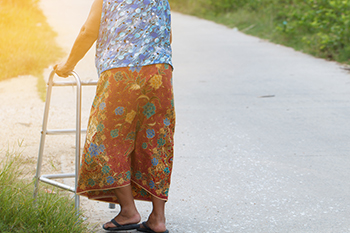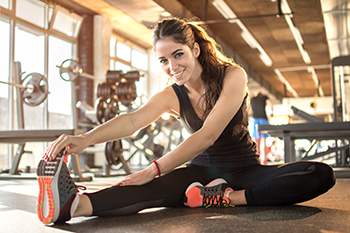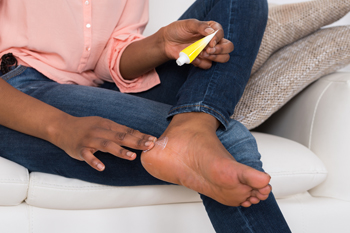Connect With Us
Blog
Items filtered by date: February 2023
Hospital Stays and Fall Prevention Techniques

The majority of hospitals implement fall prevention strategies. Studies suggest that falls may be overlooked, mainly because the patients are admitted for other reasons. If a fall occurs in the hospital, a promising recovery may take longer than expected. Patients may prefer to stay in bed as it may be safer than walking through corridors. However, mobility and strength can be increased when walking is done as often as possible. It is beneficial for hospitals to have employees learn how to protect patients from falling as each patient is unique. Some patients can fall as a result of mental status or from medications that put them at a higher risk for falls. Unanticipated falls can include people who suddenly experience a stroke or seizure, and different fall prevention protocols are often put in place. If you or a loved one would like to learn more fall prevention techniques, it is suggested that you reach out to a podiatrist who can provide you with helpful tips.
Preventing falls among the elderly is very important. If you are older and have fallen or fear that you are prone to falling, consult with one of our podiatrists from Omega Podiatry. Our doctors will assess your condition and provide you with quality advice and care.
Every 11 seconds, an elderly American is being treated in an emergency room for a fall related injury. Falls are the leading cause of head and hip injuries for those 65 and older. Due to decreases in strength, balance, senses, and lack of awareness, elderly persons are very susceptible to falling. Thankfully, there are a number of things older persons can do to prevent falls.
How to Prevent Falls
Some effective methods that older persons can do to prevent falls include:
- Enrolling in strength and balance exercise program to increase balance and strength
- Periodically having your sight and hearing checked
- Discuss any medications you have with a doctor to see if it increases the risk of falling
- Clearing the house of falling hazards and installing devices like grab bars and railings
- Utilizing a walker or cane
- Wearing shoes that provide good support and cushioning
- Talking to family members about falling and increasing awareness
Falling can be a traumatic and embarrassing experience for elderly persons; this can make them less willing to leave the house, and less willing to talk to someone about their fears of falling. Doing such things, however, will increase the likelihood of tripping or losing one’s balance. Knowing the causes of falling and how to prevent them is the best way to mitigate the risk of serious injury.
If you have any questions, please feel free to contact our offices located in Los Angeles, Huntington Park, and Reseda, CA . We offer the newest diagnostic and treatment technologies for all your foot care needs.
What Is Cuboid Syndrome?

Cuboid syndrome causes lateral, or side, midfoot pain. It is thought to be a result of injury to the calcaneocuboid joint because of a recurrent or forceful impact on the cuboid bone. The cuboid is a small midfoot bone that connects the outer metatarsals to the heel bone. A person with cuboid syndrome usually has swelling, lateral foot pain, and an unnatural gait. This can happen from running over a protrusion in the ground, such as a tree root, spraining one’s ankle that does not respond to treatment, or from peroneal tendinopathy, which is overuse of the peroneal tendons. Diagnosis is often made by taking a history of the patient, asking about any injuries incurred, and examining the foot. If you are suffering from lateral midfoot pain, it is a good idea to see a podiatrist for a proper diagnosis and treatment.
Cuboid syndrome, also known as cuboid subluxation, occurs when the joints and ligaments near the cuboid bone in the foot become torn. If you have cuboid syndrome, consult with one of our podiatrists from Omega Podiatry. Our doctors will assess your condition and provide you with quality foot and ankle treatment.
Cuboid syndrome is a common cause of lateral foot pain, which is pain on the outside of the foot. The condition may happen suddenly due to an ankle sprain, or it may develop slowly overtime from repetitive tension through the bone and surrounding structures.
Causes
The most common causes of cuboid syndrome include:
- Injury – The most common cause of this ailment is an ankle sprain.
- Repetitive Strain – Tension placed through the peroneus longus muscle from repetitive activities such as jumping and running may cause excessive traction on the bone causing it to sublux.
- Altered Foot Biomechanics – Most people suffering from cuboid subluxation have flat feet.
Symptoms
A common symptom of cuboid syndrome is pain along the outside of the foot which can be felt in the ankle and toes. This pain may create walking difficulties and may cause those with the condition to walk with a limp.
Diagnosis
Diagnosis of cuboid syndrome is often difficult, and it is often misdiagnosed. X-rays, MRIs and CT scans often fail to properly show the cuboid subluxation. Although there isn’t a specific test used to diagnose cuboid syndrome, your podiatrist will usually check if pain is felt while pressing firmly on the cuboid bone of your foot.
Treatment
Just as the range of causes varies widely, so do treatments. Some more common treatments are ice therapy, rest, exercise, taping, and orthotics.
If you have any questions, please feel free to contact our offices located in Los Angeles, Huntington Park, and Reseda, CA . We offer the newest diagnostic and treatment technologies for all your foot care needs.
See Your Podiatrist Regularly If You Work On Your Feet
Simple Methods to Prevent Running Injuries

There are people who enjoy many forms of running, ranging from recreational jogging to training for a marathon. Incurring a running injury can wreak havoc on the running routine, and it is often temporarily stopped until the injury has healed. Seasoned runners may know how to implement effective techniques to prevent running injuries. These can consist of warming up before running, performing foot and ankle stretches, and cooling down after the run. Additionally, it is beneficial to get adequate sleep and rest between runs, which can help the body to recover. Gradually increasing speed and distance can help the body to adjust to running, and it is important to be aware of the type of surfaces that are run on. When the right running shoes are worn, in addition to performing strength-training exercises, the risk of incurring a running injury may be reduced. If you would like more information about how running can affect the feet, and efficient methods to prevent running injuries, please contact a podiatrist.
Exercising your feet regularly with the proper foot wear is a great way to prevent injuries. If you have any concerns about your feet, contact one of our podiatrists of Omega Podiatry. Our doctors will treat your foot and ankle needs.
How to Prevent Running Injuries
Many common running injuries are caused by overuse and overtraining. When the back of the kneecap starts wearing out and starts causing pain in your knee, this is commonly referred to as runner’s knee. Runner’s knee is a decrease in strength in your quadriceps and can occur if you’re not wearing properly fitted or supporting shoes. To prevent runner’s knee, focusing on hip strengthening is a good idea, as well as strengthening your quads to keep the kneecaps aligned.
What Are Some Causes of Running Injuries?
- One cause of a common running injury is called iliotibial band syndrome.
- Plantar fasciitis is also another common injury.
- Stress fractures can occur from overtraining, lack of calcium, or even your running style.
Best Ways to Prevent Running Injuries
- Wear footwear that fits properly and suits your running needs.
- Running shoes are the only protective gear that runners have to safeguard them from injury.
- Make a training schedule. Adding strengthening exercises as well as regular stretching can help keep you strong and limber and can lessen the possibility of injuries.
- Stretching keeps muscles limber; this will help you gain better flexibility.
If you have any questions please feel free to contact our offices located in Los Angeles, Huntington Park, and Reseda, CA . We offer the newest diagnostic and treatment technologies for all your foot and ankle needs.
Cracked Heels and the Winter

Cracked heels are not one of the most severe and health-threatening conditions that might affect the feet. However, it is nonetheless an unpleasant and unsightly condition that many individuals will be wise to try to avoid. Cracked heels occur when the skin on the back of the heel becomes tough and the skin creates fissures due to a lack of moisture. Interestingly, cracked heels have a notable relationship with seasonality and temperature. Specifically, when winter arrives and the temperature drops considerably, an individual may be more susceptible to developing cracked heels. This phenomenon can be explained by the fact that it is often dry in cold weather. As a result, this dryness can impact the heels of the feet, reducing existing moisture in the heels. Please contact a podiatrist today if you would like more information about this foot condition.
Cracked heels are unsightly and can cause further damage to your shoes and feet. If you have any concerns, contact one of our podiatrists from Omega Podiatry. Our doctors can provide the care you need to keep you pain-free and on your feet.
Cracked Heels
Cracked heels appear unappealing and can make it harder for you walk around in sandals. Aside from looking unpleasant, cracked heels can also tear stockings, socks, and wear out your shoes. There are several methods to help restore a cracked heel and prevent further damage.
How Do You Get Them?
Dry skin is the number one culprit in creating cracked heels. Many athletes, walkers, joggers, and even swimmers suffer from cracked heels. Age and skin oil production play a role to getting cracked heels as well.
Promote Healing
Over the counter medicines can help, especially for those that need instant relief or who suffer from chronic dry feet.
Wear Socks – Wearing socks with medicated creams helps lock in moisture.
Moisturizers – Applying both day and night will help alleviate dryness which causes cracking.
Pumice Stones – These exfoliate and remove dead skin, which allows for smoother moisturizer application and better absorption into the skin.
Change in Diet
Eating healthy with a well-balanced diet will give the skin a fresh and radiant look. Your body responds to the kinds of food you ingest. Omega-3 fatty acids and zinc supplements can also revitalize skin tissue.
Most importantly, seek professional help if unsure how to proceed in treating cracked heels. A podiatrist will help you with any questions or information needed.
If you have any questions, please feel free to contact our offices located in Los Angeles, Huntington Park, and Reseda, CA . We offer the newest diagnostic and treatment technologies for all your foot care needs.
Blog Archives
- April 2024
- March 2024
- February 2024
- January 2024
- December 2023
- November 2023
- October 2023
- September 2023
- August 2023
- July 2023
- June 2023
- May 2023
- April 2023
- March 2023
- February 2023
- January 2023
- December 2022
- November 2022
- October 2022
- September 2022
- August 2022
- July 2022
- June 2022
- May 2022
- April 2022
- March 2022
- February 2022
- January 2022
- December 2021
- November 2021
- October 2021
- September 2021
- August 2021
- July 2021
- June 2021
- May 2021
- April 2021
- March 2021

